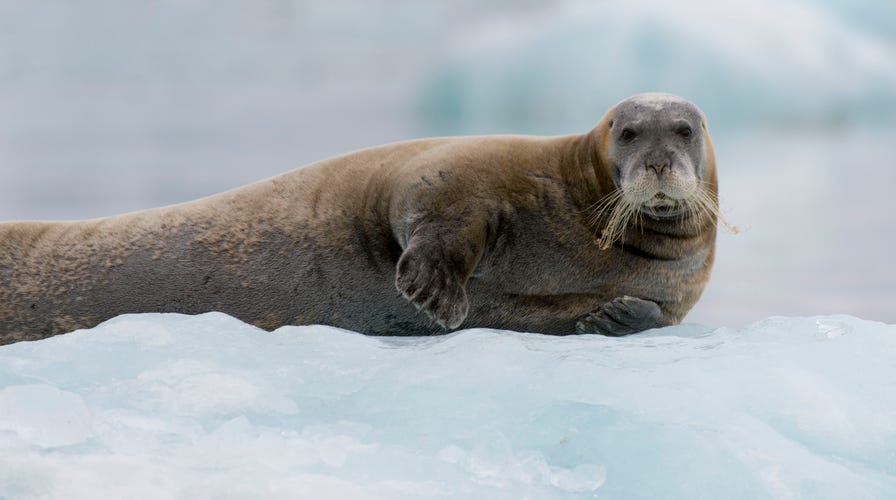Fox News Flash top headlines for Nov. 8
Fox News Flash top headlines for Nov. 8 are here. Check out what's clicking on Foxnews.com
A deadly virus impacting seals may be spreading faster due to the loss of Arctic sea ice from warming temperatures.
Phocine distemper virus (PDV), which was responsible for the death of thousands of European harbor seals in 2002, was found in northern sea otters in Alaska two years later, leading scientists to wonder how the virus reached them.
According to a 15-year study published Thursday in the journal Scientific Reports and led by researchers at the University of California-Davis, the "radical reshaping" of sea ice might have opened a new route for contact between seals in the Arctic and sub-Arctic regions that was not previously possible.
“The loss of sea ice is leading marine wildlife to seek and forage in new habitats and removing that physical barrier, allowing for new pathways for them to move,” said corresponding author Tracey Goldstein, associate director of the One Health Institute at the UC Davis School of Veterinary Medicine, in a statement.
WORLD'S THICKEST MOUNTAIN GLACIER IS MELTING, NEW NASA IMAGES REVEAL

A Bearded seal (Erignathus barbatus) resting on an icefloe at the Lilliehook Glacier in Lilliehookfjorden, Svalbard, Norway. (Getty Images)
“As animals move and come in contact with other species, they carry opportunities to introduce and transmit new infectious disease, with potentially devastating impacts," she added.
The scientists checked marine mammals for exposure to the virus from 2001 to 2016 -- with sampled mammals including ice-associated seals, northern fur seals, Steller sea lions and norther sea otters. They assessed Arctic open sea ice and open water routes from the North Atlantic to the North Pacific oceans.
Researchers found widespread infection and exposure to the virus starting in 2003, and they located another peak in 2009. Those peaks coincided with reductions in Arctic sea ice extent.
ANCIENT UPRIGHT APE THAT HAD HUMAN LEGS DISCOVERED BY SCIENTISTS
“As sea ice continues its melting trend, the opportunities for this virus and other pathogens to cross between North Atlantic and North Pacific marine mammals may become more common,” first author Elizabeth VanWormer, a postdoctoral researcher at UC Davis during the study and currently an assistant professor at the University of Nebraska, Lincoln, said in a statement.
“This study highlights the need to understand PDV transmission and the potential for outbreaks in sensitive species within this rapidly changing environment.”





















